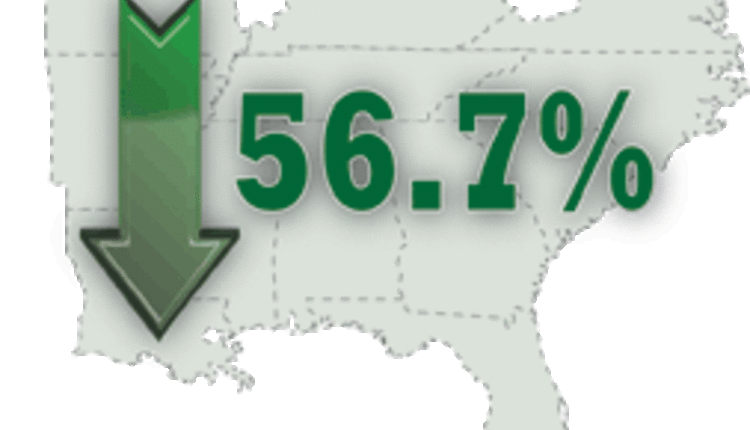
Last year’s milk and dairy product prices continued to be depressed despite ebbing growth in milk output and U.S. dairy exports, exceeding 2017 levels for most of this year. According to the USDA, the average Class III milk price for 2018 was $14.60 per hundredweight (cwt.), which was the lowest price recorded over the past four years.
Trade conflicts with China and Mexico weighed heavily on dairy product markets as sales slowed. As a result, relatively high levels of stocks forced down prices.
As this new year unfolds, milk and dairy product price forecasts indicate U.S. milk prices may average $1 to $1.50 per cwt. above those seen during 2018. Even so, it could be better if lingering trade disputes and burdensome stocks of dairy products were not hanging over dairy markets.
With this uncertain market forecast, it is fortunate that the new 2018 Farm Bill (officially known as the Agricultural Improvement Act of 2018) includes features that should provide dairy farmers an effective income safety net.
AN ENGINE OVERHAUL

In an effort to “fix” MPP-Dairy last year, the Bipartisan Budget Act of 2018 included amendments that significantly reduced premium costs for the first 5 million pounds of milk production (Tier 1), adjusted how margins were calculated, and allowed for possible payments every month instead of every other month. These program changes greatly improved income protection for dairy producers. In fact, the USDA announced MPP-Dairy 2018 payments totaling $253 million were made during eight months of 2018 to more than 21,400 farmers.
AN ENTIRELY NEW ENGINE
The 2018 Farm Bill goes even further to improve this safety net. The most significant change establishes a new Dairy Margin Coverage (DMC) program that replaces MPP-Dairy. Other important features are:
- Allowing dairy farmers to simultaneously participate in DMC and LGM-Dairy or Dairy-RP.
- Changing the monthly Class I mover price from the higher of either Class III or Class IV prices to an average of these two prices plus 74 cents per cwt.
- Reauthorizes forward pricing by noncooperative handlers and provides reimbursements for charitable donations of milk. This article focuses its attention on elements of DMC.
The Agricultural Improvement Act of 2018 continues to calculate DMC margins and possible payments on a monthly basis while significantly lowering the Tier 1 (5 million pounds or less) premium rates and adding coverage level thresholds for $8.50, $9, and $9.50 per cwt. of margin protection.
While additional thresholds above $8 are not available for Tier 2 milk production (above 5 million pounds), both Tier 1 and Tier 2 have wider ranges for percentages of “Production History” from a low of 5 percent to a maximum of 95 percent. This allows all dairy farms to participate.
PREMIUM DISCOUNTS PAID
Several interesting features of DMC are the availability of discounts and credits that can be applied to lower “out-of-pocket” premium costs. First, if a farmer elects to enroll in DMC for the full five years at the same “Coverage Level Threshold” and same percent of “Production History,” then the producer is rewarded with a 25 percent discount on premiums for all five years.
For example, the premium for the $9.50 coverage level would decrease by almost 4 cents per cwt. — dropping from 15 to 11.25 cents. Of course, producers could retain the ability to elect different coverage levels and percentages of production history every year and forego the 25 percent premium discount.
Second, farmers who participated in MPP-Dairy from 2014 to 2017 obviously paid premiums that likely failed to result in any payments. To compensate producers who paid these premiums, DMC generates credits for each farmer equal to total premiums paid minus total benefits received under MPP-Dairy.
CREDITS CAN BE USED TWO WAYS:
- Seventy-five percent of the credits could be used to pay DMC premiums during 2019 and thereafter.
- The farmer could request a cash refund amounting to only 50 percent of the total credits.
Dairy farmers who quit milking and have DMC credits could also qualify for these cash refunds. Clearly, USDA will write detailed rules and regulations for how credits will be calculated and who may be eligible for cash refunds.
WHEN AND HOW TO ENROLL
The legislation states the USDA must open enrollment no more than 60 days from when the 2018 Farm Bill becomes effective, or specifically on or before March 1, 2019. The bill also obliges the USDA to establish a 90-day enrollment period for 2019, which translates to a May 30, 2019, deadline to sign up for DMC.
When to enroll could be a “two-edged sword” in that selecting coverage decisions early may result in receiving DMC payments quickly. However, waiting to enroll allows more time to select the “right” coverage levels but delays receiving possible DMC payments.
Remember, farmers who opt to receive the 25 percent discount on premiums will not retain the ability to alter coverage levels or percentages of production history from 2020 through 2023, thus DMC enrollment will be automatic.
Those producers foregoing this discount will be required to enroll annually, possibly during the last month of the previous year. As in past programs, farmers should enroll at their local Farm Services Administration (FSA) offices.
CONSIDER YOUR OPTIONS
Essentially, the decision whether to participate in DMC is a “no-brainer” where potential benefits of enrolling greatly outweigh the costs. Current market conditions indicate there is a high probability farmers will receive DMC payment for most months, if not all of 2019, for the $9.50 coverage.
As one of my colleagues recommends, “Keep it simple” by selecting Tier 1 coverage at $9.50 for the entire five years for your milk production less than 5 million pounds. Meanwhile, larger producers with milk output in the Tier 2 level may want to select the $4 catastrophic coverage for production above 5 million pounds.







